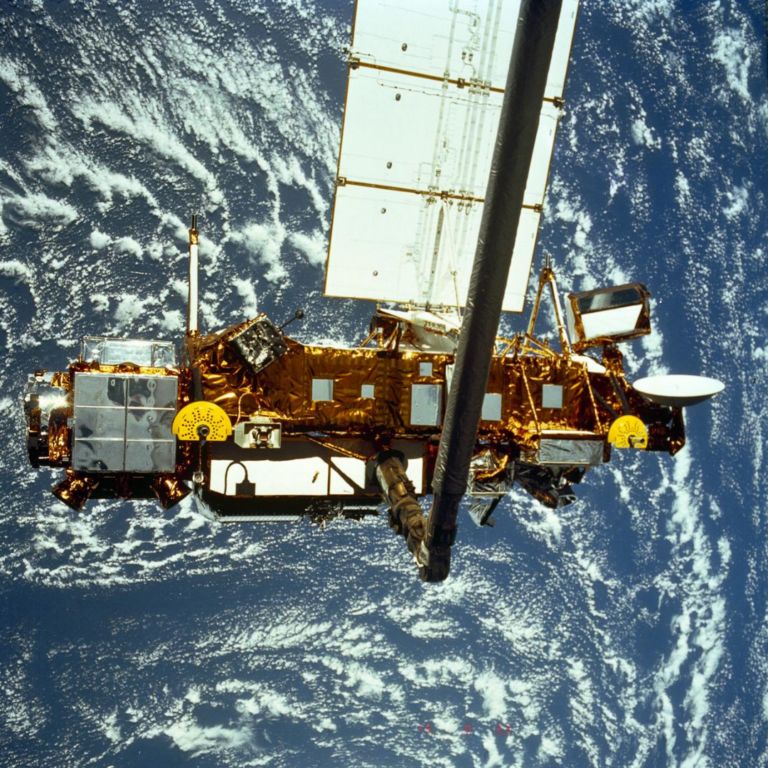UARS
Upper Atmosphere Research Satellite
Discovered the wonders of Earth's ozone

The Upper Atmosphere Research Satellite helped scientists understand the energy input, chemistry and dynamics of the upper atmosphere and the interaction between the upper and lower atmosphere. Throughout its remarkable 14 year mission, UARS made observations that led to major scientific discoveries. UARS confirmed the role of chlorofluorocarbons (CFCs) in ozone depletion and clarified chemical processes that cause the Antarctic ozone hole.
Mission Class:
Mission Status:
LASP Roles:
Science Target:
Mission Focus:
Primary Mission Site:
LASP Mission Site:

Launch Date: September 12, 1991
Mission Duration: 14 years
Extended Mission: decommissioned 2005
Lead Institution: NASA Earth Science, Goddard Space Flight Center
Partners: Laboratory for Atmospheric and Space Physics
The primary scientific objective for the SOLSTICE program was to make precise and accurate measurements of the solar ultraviolet (UV) spectral irradiance over the spectral range 119 nm to 420 nm.
The primary science requirement for SOLSTICE was to provide one full solar spectrum per calendar day. The SOLSTICE instrument made daily solar irradiance measurements between 119 and 420 nanometers approximately 15 times per day, from October 1991 until September 2001.
Key Findings
The stellar calibration technique employed by SOLSTICE has placed the ultraviolet irradiance from the Sun on a “standard” reference scale. At any future time, the Sun can be calibrated against this same stellar reference, and thereby directly related to these UARS observations. In this way solar variability over arbitrarily long time periods can be measured.
Early in the UARS mission the Sun was very active, and conditions at that time well represent “solar maximum” conditions. There is a very strong and clear signal of the 27-day (rotation period of the Sun) variability, caused by the passage of large active regions across the face of the Sun.
During the intervening three and a half years, the output of the Sun at ultraviolet wavelengths, 120 nm to 420 nm, steadily decreased. Changes as large as a factor of two were observed at the shortest wavelengths, whereas the changes at the longer, visible wavelengths were only fractions of one percent. Likewise, the magnitude of the 27-day variations decreased significantly as solar minimum approached.
The total radiation from the Sun varies by only small fractions of one percent over its 11-year activity cycle, but even such small changes can have important climate implications. Little is known about how these small changes are distributed in wavelength, and, although SOLSTICE did not have the requisite 0.1% long-term accuracy to address this question directly, it often recorded shorter term variations with exceptional precision. Studying the ultraviolet contribution to variations in the “solar constant” over these limited periods will improve our understanding of the long-term variations.
The primary science requirement for SOLSTICE was to provide one full solar spectrum per calendar day, and to achieve this, the data processing algorithm combined typically 15 individual observations to form the single daily spectrum, adjusted to 1 Astronomical Unit (AU: mean Sun-Earth distance). This daily SOLSTICE spectrum, called the Level 3BS product, was reported for each 1.0 nm interval (centered on the half nm) between 119 nm to 420 nm and is available from the NASA Goddard data center.
And from LASP’s LISIRD site:
https://lasp.colorado.edu/lisird/
